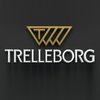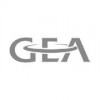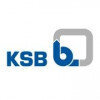Filter interviews by
Pci Analytics Design Engineer Interview Questions and Answers
Pci Analytics Design Engineer Interview Experiences
1 interview found
Genral knowledge and about yourself
(2 Questions)
- Q1. Experience and skills
- Q2. Where do you live
- Ans.
I live in a cozy apartment in downtown Seattle.
I live in downtown Seattle
My apartment is cozy
I enjoy the urban lifestyle
Top trending discussions






Interview questions from similar companies

I applied via Recruitment Consultant and was interviewed before Sep 2020. There were 3 interview rounds.
Interview Questionnaire
2 Questions
- Q1. Previous company work experience
- Q2. Plans in next 5 years
- Ans.
I plan to continue developing my technical skills and taking on leadership roles within the company.
Pursue advanced technical certifications
Lead cross-functional teams on complex projects
Mentor junior engineers
Explore opportunities for innovation and process improvement
Collaborate with senior management to set strategic goals
Interview Preparation Tips

(2 Questions)
- Q1. What is QA and QC
- Ans.
QA stands for Quality Assurance and involves processes to prevent defects, while QC stands for Quality Control and involves processes to identify defects.
QA focuses on preventing defects in the product or service being delivered
QC focuses on identifying defects in the product or service being delivered
QA involves processes such as reviews, audits, and process improvements
QC involves processes such as testing, inspectio...
- Q2. Welding details
Interview Preparation Tips


(1 Question)
- Q1. General discussion of your work history
(1 Question)
- Q1. Stream technical question
General work related assignment
Interview Preparation Tips

I applied via Naukri.com and was interviewed before Feb 2023. There were 2 interview rounds.
Aptitude test is conducted by organization to know the problem solving ability of candidate.
(1 Question)
- Q1. What are the different types of connections in steel structures.
- Ans.
Different types of connections in steel structures include welded connections, bolted connections, and riveted connections.
Welded connections involve joining steel members by welding them together.
Bolted connections use bolts and nuts to connect steel members.
Riveted connections use rivets to connect steel members.
Other types of connections include pinned connections and moment-resisting connections.
Examples: Welded be...
Interview Preparation Tips

(2 Questions)
- Q1. Stress Strain curve
- Q2. IS codes related to steel structures

I applied via Naukri.com and was interviewed in Jun 2024. There were 3 interview rounds.
Solving questions paper
CAD &Solid work test
(2 Questions)
- Q1. Project Handling experience
- Q2. Salary negotiation

I appeared for an interview in Nov 2024.
(4 Questions)
- Q1. Wind calculation as per IS code
- Ans.
The procedure for wind calculation as per IS code involves determining the design wind speed, selecting the appropriate terrain category, and calculating the wind pressure.
Determine the design wind speed based on the location and height of the structure.
Select the appropriate terrain category (rural, urban, etc.) as per IS code guidelines.
Calculate the wind pressure using the formula provided in the IS code.
Consider fa...
- Q2. SFD and BMD of cantilever beam
- Q3. Staad model for fixed pole
- Ans.
A STAAD model for a fixed pole is a structural analysis and design model used to determine the stability and strength of a pole that is fixed in place.
In a STAAD model for a fixed pole, the pole is typically modeled as a vertical member with fixed supports at the base.
The model considers factors such as wind loads, dead loads, and any other relevant loads that may act on the pole.
The analysis helps in determining the s...
- Q4. Design of Square base plate
- Ans.
Key considerations in designing a square base plate
Ensure the base plate is large enough to support the load without excessive deflection
Select appropriate material and thickness to meet structural requirements
Consider the connection details for attaching the base plate to the structure
Account for any potential corrosion or environmental factors that may affect the base plate
Include provisions for anchor bolts or other...
Interview Preparation Tips

Design Engineer Interview Questions & Answers
Crane Process Flow Technologies Indiaposted on 26 Nov 2024
(1 Question)
- Q1. Thumb rules for sheet metal design
- Ans.
Thumb rules for sheet metal design include minimum bend radius, hole spacing, and material thickness considerations.
Minimum bend radius should be at least equal to the material thickness to avoid cracking
Hole spacing should be at least 2 times the material thickness to prevent distortion
Material thickness should be chosen based on the application and required strength
Avoid sharp corners to reduce stress concentrations
U...
Overall or general review
Skills evaluated in this interview

Design Engineer Interview Questions & Answers
Crane Process Flow Technologies Indiaposted on 6 Feb 2024
I applied via Walk-in and was interviewed in Aug 2023. There was 1 interview round.
(1 Question)
- Q1. 1)Pressure Rating Standards 2) Stress strain,iron carbon diagrams 3) carbon percentage in all metals
Pci Analytics Interview FAQs
Tell us how to improve this page.
Pci Analytics Interviews By Designations
- Pci Analytics HR Executive Generalist Interview Questions
- Pci Analytics Welder Interview Questions
- Pci Analytics Design Engineer Interview Questions
- Pci Analytics Industrial Sales Engineer Interview Questions
- Pci Analytics Export Executive Interview Questions
- Pci Analytics Sales Executive Interview Questions
- Pci Analytics Sales Engineer Interview Questions
- Pci Analytics Mechanical Engg. Design Interview Questions
- Show more
Interview Questions for Popular Designations
- Mechanical Engg. Design Interview Questions
- Senior Design Engineer Interview Questions
- Electrical Design Engineer Interview Questions
- Structural Design Engineer Interview Questions
- Piping Designer Interview Questions
- Auto CAD Designer Interview Questions
- Junior Design Engineer Interview Questions
- Hardware Design Engineer Interview Questions
- Show more
Pci Analytics Design Engineer Interview Process
based on 1 interview
Interview experience
Design Engineer Interview Questions from Similar Companies
Pci Analytics Design Engineer Reviews and Ratings
based on 3 reviews
Rating in categories
|
Project Engineer
21
salaries
| ₹2.2 L/yr - ₹5.1 L/yr |
|
Sales Coordinator
12
salaries
| ₹2 L/yr - ₹3.5 L/yr |
|
Service Engineer
12
salaries
| ₹1 L/yr - ₹3.7 L/yr |
|
Design Engineer
10
salaries
| ₹2 L/yr - ₹4.6 L/yr |
|
Sales Executive
10
salaries
| ₹2.4 L/yr - ₹4.8 L/yr |

Trelleborg

Case New-Holland Construction Equipment India

MITA

PMT Machines
- Home >
- Interviews >
- Pci Analytics Interview Questions >
- Pci Analytics Design Engineer Interview Questions













